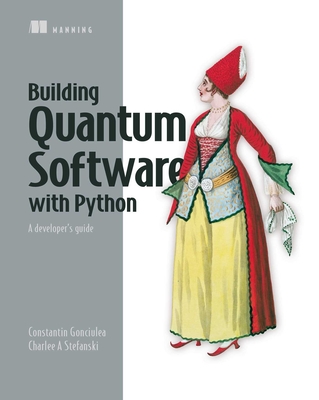Building Quantum Software in Python: A Developer's Guide

Building Quantum Software in Python: A Developer's Guide
- A practical introduction to quantum algorithms
- Quantum states, gates, and circuits
- Running software on simulators and quantum hardware
- Classical simulations of quantum computations Quantum computers are rapidly becoming a realistic alternative for complex research and business problems. Building Quantum Software with Python lays out the math and programming techniques you'll need to apply quantum solutions to real challenges like predictions based on massive data sets and intricate simulations. You will learn which quantum algorithms and patterns apply to different types of problems and how to build your first quantum applications. Purchase of the print book includes a free eBook in PDF and ePub formats from Manning Publications. About the book Building Quantum Software with Python builds your understanding of quantum computing by relating it to the classical computing concepts you already know. With careful explanations and thoughtful illustrations, it takes you from zero knowledge to creating quantum solutions that run on a simulator or on real quantum hardware. The book utilizes intuitive visualizations of quantum systems with tables and diagrams developers will find instantly familiar, and code implementations that are easier to understand than complex algebra. As you go, you'll explore potential applications of quantum computing, including useful probability distributions for truly random sampling, quantum optimization solutions using the knapsack problem, and quantum solutions for unstructured search. All the simulator code you write can be easily converted to run on IBM Quantum hardware. About the reader For developers with basic math and programming skills. No specialist knowledge of quantum computing required. About the author Constantin Gonciulea leads the Advanced Technology group at Wells Fargo. He holds advanced degrees in mathematics and computer science. Over the last 25 years, he has delivered major server-side, web, and mobile
PRP: 495.92 Lei
Acesta este Prețul Recomandat de Producător. Prețul de vânzare al produsului este afișat mai jos.
396.74Lei
396.74Lei
495.92 LeiLivrare in 2-4 saptamani
Descrierea produsului
- A practical introduction to quantum algorithms
- Quantum states, gates, and circuits
- Running software on simulators and quantum hardware
- Classical simulations of quantum computations Quantum computers are rapidly becoming a realistic alternative for complex research and business problems. Building Quantum Software with Python lays out the math and programming techniques you'll need to apply quantum solutions to real challenges like predictions based on massive data sets and intricate simulations. You will learn which quantum algorithms and patterns apply to different types of problems and how to build your first quantum applications. Purchase of the print book includes a free eBook in PDF and ePub formats from Manning Publications. About the book Building Quantum Software with Python builds your understanding of quantum computing by relating it to the classical computing concepts you already know. With careful explanations and thoughtful illustrations, it takes you from zero knowledge to creating quantum solutions that run on a simulator or on real quantum hardware. The book utilizes intuitive visualizations of quantum systems with tables and diagrams developers will find instantly familiar, and code implementations that are easier to understand than complex algebra. As you go, you'll explore potential applications of quantum computing, including useful probability distributions for truly random sampling, quantum optimization solutions using the knapsack problem, and quantum solutions for unstructured search. All the simulator code you write can be easily converted to run on IBM Quantum hardware. About the reader For developers with basic math and programming skills. No specialist knowledge of quantum computing required. About the author Constantin Gonciulea leads the Advanced Technology group at Wells Fargo. He holds advanced degrees in mathematics and computer science. Over the last 25 years, he has delivered major server-side, web, and mobile
Detaliile produsului









